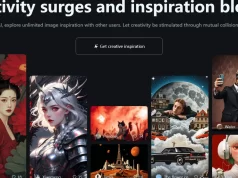Google Links Their Google’s Bard AI add-ons to Gmail, Docs, Maps, and other services with its AI chatbot


Google is broadening the scope of its Bard AI tool, now offering direct integration with a range of the company’s core applications and services. This expansion, known as Bard extensions, encompasses connectivity with Gmail, Docs, Google Drive, Google Maps, YouTube, and even Google Flights and Hotels. The overarching aim is to employ Bard as a unified platform for retrieving information from these diverse services.


Join our Telegram Channel for Updates
With Bard extensions in play, you can pose inquiries and make requests that link seamlessly with any or all of Google’s various applications.
It’s important to note that Bard extensions are opt-in, affording users the flexibility to activate or deactivate them for each individual application. Google assures that any personal data extracted from Gmail, Docs, or Drive remains private, inaccessible to human reviewers, exempt from ad generation, and not utilized for training Bard.


To explore Bard extensions, simply launch Chrome and navigate to the extensions page. Here, you can enable or disable extensions for Google Flights, Google Hotels, Google Maps, Google Workspace (comprising Gmail, Docs, and Drive), and YouTube. Activating Google Workspace will prompt you to establish a connection with your Google Workspace account. The page also provides sample queries for each application, allowing you to test its functionality before submitting your own requests.
Subsequently, proceed to Google’s Bard AI platform and input your query or request within the provided prompt. If your request includes keywords like “hotels,” “flights,” or “directions,” Bard will automatically engage the relevant extension to formulate its response. In cases where your request does not contain such keywords, you can specify the desired service using the “@” symbol. Simply initiate “@” followed by the service you intend to utilize, such as “@flights,” or “@maps,” and Bard will make the appropriate selection. Subsequently, it will employ the relevant service to generate and present its response.
Furthermore, Google’s Bard AI has additional enhancements in the pipeline for its users. One of the prevalent challenges with contemporary AI chatbots is their susceptibility to misinformation, often referred to as “hallucinations” by developers.
In an effort to mitigate these potential errors, Google’s Bard AI has introduced a method for cross-verification of responses in English. Upon the response’s appearance, users can click on the Google icon. Google’s Bard AI then conducts an evaluation of its own response and performs web searches to corroborate the information. Each sentence or phrase within the response is subsequently highlighted. By clicking on a highlighted section, users can access the source of the information.
Furthermore, as another recent addition to Google’s Bard AI capabilities, Google now allows users to build upon shared conversations. By sharing a Bard chat via a provided link, another individual can join the conversation and pose additional questions to Bard on the same topic. This collaborative approach enables both parties to explore a particular subject using Bard.
Google highlighted these new features as outcomes of updates to their PaLM 2 model, which is their most advanced model to date. Google explained in a blog post about the Bard updates, “Based on your feedback, we’ve applied state-of-the-art reinforcement learning techniques to train the model to be more intuitive and imaginative. So, whether you want to collaborate on something creative, start in one language and continue in one of 40+ others, or ask for in-depth coding assistance, Bard can now respond with even greater quality and accuracy.”











